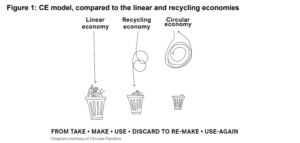New London Plan Guidance adopted – Whole Life-Cycle Carbon Assessments and Circular Economy Statements
The Mayor of London has recently adopted two new pieces of London Plan Guidance outlining the requirements for Whole Life-Cycle Carbon (WLC) Assessments and Circular Economy Statements. These currently apply only to strategic developments in London (i.e. all outline, detailed and/or hybrid applications that are referable to the Mayor). However, boroughs are also encouraged to apply the policies to smaller developments to support the Mayor’s wider sustainability priorities.
The respective guidance documents are the third and fourth to be published since the adoption of the London Plan in March 2021. The London Plan Guidance carries no specific statutory weight; however, it is capable of being a material planning consideration enabling the implementation of adopted London Plan policies.
What are Whole Life-Cycle Carbon Assessments?
Whole-life Cycle Carbon (WLC) – sometimes known as ‘embodied carbon’ – refers to the carbon emissions of a building over its entire lifetime, from its materials, construction, operational use, future demolition, and subsequent disposal. A WLC assessment requires applicants to demonstrate how they have calculated and minimised the carbon emissions of their proposal and encourages the retention and reuse of existing materials and structures to promote sustainable building practices.
Importantly, in line with London Plan policy, the guidance requires developers to fully consider options for retaining existing buildings before substantial demolition is proposed, as this is typically the lowest-carbon option.
For applications referred to the Mayor, applicants are required to submit a WLC Statement at the following stages:
– pre-application (where relevant);
– planning application submission (i.e. RIBA stage 2/3); and
– post-construction (i.e. prior to occupation of the development. Generally, it would be expected that the assessment would be received three months post-construction).
Although primarily aimed at strategic development, the GLA has advised that local authorities should take a proactive stance on WLC assessments. Following consultation, the guidance has been updated to confirm that local authorities should secure post-construction WLC assessments by condition or through a legal agreement with the planning applicant – draft wording for which has been made available.
The GLA has devised a WLC Assessment Template which, in response to consultation feedback, has been designed to try and ‘reduce the reporting burden’ and be more user-friendly. The template can be found here.
What are Circular Economy Statements?
London Local Plan Policy SI 7 defines a circular economy as ‘…one where materials are retained in use at their highest value for as long as possible and are then reused or recycled, leaving a minimum of residual waste’. This approach offers an alternative to economically linear building practices which can be wasteful and unsustainable. A circular economy approach allows for buildings to be easily dismantled and adapted over their lifetime, prioritising the retention of existing structures above demolition where possible.
The recently published guidance on Circular Economy Statements Guidance identifies 6 principles that should be fundamental to the design process of buildings:
1. building in layers – ensuring that different parts of the building are accessible and can be maintained and replaced where necessary;
2. designing out waste – ensuring that waste reduction is planned from project inception to completion, including consideration of standardised components, modular build, and reuse of secondary products and materials;
3. designing for longevity (with an emphasis placed on using secondary materials, with re-use on-site or locally preferred);
4. designing for adaptability or flexibility;
5. designing for disassembly;
6. using systems, elements, or materials that can be reused and recycled.
For applications referred to the Mayor, applicants are required to submit a Circular Economy Statement at the following stages:
– pre-application (where relevant and only on a voluntary basis);
– planning application submission (both outline and detailed); and
– post-construction (i.e. upon commencement of RIBA Stage 6 and prior to the building being handed over, if applicable.
The Circular Economy statement must include two parts: a written report and the GLA’s Circular Economy template spreadsheet.
These two new LPG documents are useful in providing clearer guidance on the scope and information that applicants are expected to consider and submit at each stage of the planning process – to comply with London Plan policy. The GLA have also indicated that training and resources will be made available to local authorities to support assessment and monitoring.
If you have any queries about Whole Life-Cycle Carbon Assessments or Circular Economy Statements, please feel free to contact one of the Firstplan team.
Article by Will Hayes

